Efectividad de la maniobra de Epley realizada en atención primaria para tratar el vértigo posicional paroxístico benigno del canal posterior
dc.contributor
Universitat Autònoma de Barcelona. Departament de Medicina
dc.contributor.author
Ballvé Moreno, José Luis
dc.date.accessioned
2019-04-26T05:58:10Z
dc.date.available
2019-04-26T05:58:10Z
dc.date.issued
2018-11-30
dc.identifier.isbn
9788449085024
en_US
dc.identifier.uri
http://hdl.handle.net/10803/666719
dc.description.abstract
Introducción
El vértigo posicional paroxístico benigno del canal posterior es una patología prevalente en las consultas de atención primaria. Su abordaje diagnóstico consiste en una historia clínica y un examen físico, y su tratamiento es la maniobra de Epley. Existen escasas evidencias publicadas sobre la efectividad de la maniobra de Epley en atención primaria.
Objetivos
Analizar la eficacia de una sola maniobra de Epley en atención primaria.
Diseño y ámbito
Ensayo clínico aleatorizado, doble ciego con grupo control realizado en 2 CAP.
Métodos
Sujetos. Pacientes mayores de 18 años con diagnóstico de vértigo posicional paroxístico benigno del canal posterior subjetivo (vértigo solamente) y objetivo (vértigo y nistagmo) después de una prueba de Dix-Hallpike (PDH).
Grupo de intervención: maniobra de Epley. Grupo de control: maniobra simulada.
Se prescribió betahistina siguiendo el mismo régimen en ambos grupos para permitir la comparabilidad entre grupos.
Principales medidas de resultado: Respuesta a la PDH, clasificada como negativa, positiva para vértigo o nistagmo (PDH positiva), positiva para el vértigo solamente (PDH positiva sin nistagmo) o para nistagmo y vértigo (PDH Positiva con nistagmo); resolución autorreportada del vértigo; y la severidad autoinformada del vértigo. Evaluaciones a 1 semana, 1 mes y 1 año.
Resultados
Se incluyeron 134 pacientes: 66 en el grupo de intervención y 68 en el grupo de maniobra simulada.
El grupo de intervención mostró en los análisis no ajustados a la semana 1, una tasa de PDH positiva con nistagmo del 21,54% en el grupo control y del 6,67% en el grupo intervención (p=0,022). La severidad del vértigo en la primera semana fue de 5 en el grupo control y 3 en el grupo intervención (p=0,086). En los análisis multivariantes, en los pacientes con PDH positiva con nistagmo en la visita basal se observó una reducción de la severidad del vértigo (efecto marginal para la pregunta tipo Likert= -1,73 [-2,95, -0,51]) y mejores tasas de PDH Positiva en el grupo de intervención (odds ratio ajustado = 0,095 [0,010], 0,924]).
Discusión
Los resultados del estudio mostraron una disminución significativa de más de tres veces en la PDH positiva con nistagmo en la primera semana y una disminución de la severidad del vértigo de 2 puntos con cifras cercanas a la significación estadística en los análisis no ajustados, mientras que en los análisis multivariantes la efectividad de la ME vino condicionada por la presencia de nistagmo en la visita basal. En este subgrupo de pacientes se observó una disminución de la probabilidad de tener una PDH Positiva y una disminución de 2 puntos en la severidad percibida del vértigo como respuesta a la ME.
Conclusiones
En conclusión una sola maniobra de Epley realizada en atención primaria es un tratamiento efectivo para revertir una PDH Positiva y reducir la severidad del vértigo en pacientes con VPPB del canal posterior que tengan nistagmo en la PDH en la visita basal.
en_US
dc.description.abstract
Background
Posterior canal benign paroxysmal positional vertigo is a prevalent condition in primary care consultations. Its diagnostic approach consists of a medical history and physical examination, and its treatment is the Epley manoeuvre.There is scarce evidence on the effectiveness of the Epley manœuvre in Primary Care.
Aim
To study the effectiveness at 1 week, 1 month, and 1 year of a single Epley manoeuvre versus a sham manoeuvre in primary care.
Design and Setting
Multicentre, double-blind randomised controlled trial.
Two primary care practices.
Method
Patients > 18 years diagnosed with subjective or objective posterior canal benign paroxysmal positional vertigo (vertigo only or vertigo and nystagmus) after a Dix-Hallpike test (PDH).
Intervention group: Epley manoeuvre. Control group: sham manoeuvre.
Betahistine was prescribed following the same regimen in both groups to enable between-group comparisons.
Main outcome measures: Response to the PDH, classified as negative, positive for vertigo only or for nystagmus and vertigo (Positive PDH), positive for both vertigo and nystagmus (Positive PDH with nistagmus), positive for vertigo only (Positive PDH without nistagmus) ; self-reported resolution of vertigo; and self-reported severity of vertigo evaluated on a 10-point Likert scale (10=worst imaginable vertigo). Evaluations at 1 week, 1 month and 1 year.
Results
The intervention group showed in the analysis not adjusted for week 1, a positive PDH with nistagmus rate of 21.54% in the control group and 6.67% in the intervention group (p=0.022). The severity of vertigo in the first week was 5 in the control group and 3 in the intervention group (p=0.086). The effectiveness of the Epley manoeuvre was influenced by the presence of baseline PDH with nistagmus in the multivariate analyses. In this subgroup of patients, there was a decrease in the probability of having a positive PDH and a decrease of 2 points in the perceived severity of vertigo as a response to ME.
Discussion
The results of the study showed a significant decrease of more than three times in the positive PDH with nistagmus in the first week and a decrease in the severity of the vertigo of 2 points with figures close to statistical significance in the unadjusted analyzes, while in the analyzes multivariate the effectiveness of ME was conditioned by the presence of PDH with nistagmus at the baseline visit. In the multivariate analyzes, in the patients with positive PDH with nystagmus at the baseline visit, a reduction in the severity of vertigo was observed (marginal effect for the Likert-type question = -1.73 [-2.95, -0, 51]) and better rates of positive PDH in the intervention group (adjusted odds ratio = 0.095 [0.010], 0.924]).
Conclusions
A single Epley manoeuvre performed in primary care is an effective treatment for reversing a Positive PDH and reducing vertigo severity in patients with nystagmus in the PDH at baseline.
en_US
dc.format.extent
138 p.
en_US
dc.format.mimetype
application/pdf
dc.language.iso
spa
en_US
dc.publisher
Universitat Autònoma de Barcelona
dc.rights.license
L'accés als continguts d'aquesta tesi queda condicionat a l'acceptació de les condicions d'ús establertes per la següent llicència Creative Commons: http://creativecommons.org/licenses/by-nc-nd/4.0/
dc.rights.uri
http://creativecommons.org/licenses/by-nc-nd/4.0/
*
dc.source
TDX (Tesis Doctorals en Xarxa)
dc.subject
Vertigen
en_US
dc.subject
Vértigo
en_US
dc.subject
Vertigo
en_US
dc.subject
Atenció primària
en_US
dc.subject
Atención primaria
en_US
dc.subject
Primary care
en_US
dc.subject
Maniobra d'Epley
en_US
dc.subject
Mariobra de Epley
en_US
dc.subject
Epley manoeuvre
en_US
dc.subject.other
Ciències de la Salut
en_US
dc.title
Efectividad de la maniobra de Epley realizada en atención primaria para tratar el vértigo posicional paroxístico benigno del canal posterior
en_US
dc.type
info:eu-repo/semantics/doctoralThesis
dc.type
info:eu-repo/semantics/publishedVersion
dc.subject.udc
61
en_US
dc.contributor.authoremail
ballvejl@gmail.com
en_US
dc.contributor.director
Martín Cantera, Carlos
dc.contributor.director
Azagra Ledesma, Rafael
dc.contributor.tutor
Selva O'Callaghan, Albert
dc.embargo.terms
cap
en_US
dc.rights.accessLevel
info:eu-repo/semantics/openAccess
Aquest element apareix en la col·lecció o col·leccions següent(s)
Departament de Medicina [962]


